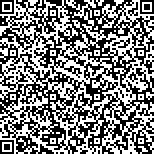下载中心
优秀审稿专家
优秀论文
相关链接
摘要

基于立体相机成像模型并结合相机参数对嫦娥三号导航相机3维测图能力进行分析,利用摄影测量原理和误差传播定律对巡视器30 m范围内的DEM精度进行了理论分析,推导出导航相机立体影像获得的采样点精度公式,并绘制了DEM的平面精度图和高程精度图;同时使用多线程技术开发了基于导航相机立体影像的地形快速重建算法,利用多线程技术完成影像的特征匹配和密集匹配,并通过分块内插生成DEM。该技术应用于嫦娥三号任务中,有力地支持了嫦娥三号遥操作路径规划相关任务。
China's Chang'e-3(CE-3) probe, which includes a lander and a rover, successfully landed on the lunar surface on December 14, 2013.High precision and automatic mapping of the lunar surface surrounding the rover is of fundamental importance both for safe rover navigation and for achievement of scientific and engineering goals. During CE-3 mission, we routinely produced topographic maps, and rover traverse maps to support surface operations of the rover.In this research, we focused on mapping capability analysis and fast terrain reconstruction using Navcam (navigation camera)stereo images acquired by Yutu rover. First, we performed topographic mapping capability analysis of Navcam stereo pairs using basic photogrammetric principles and error propagation law, and empirical formula. The expected measurement error of Navcam stereo images is less than 2 m within 44 m from the rover, and less than 1 m within a range of 31 m. To give a theoretical estimation of the mapping errors at different locations, a covariance matrix is used to depict the position error. The position errors are mainly in the radial directions. Given that the elevation differs in different distances, grid error in DEM is analyzed based on linear interpolation model, the elevation accuracy is higher than the horizontal accuracy.In order to complete terrain mapping, we presented a multi-threaded image processing method for fast generation of topographic products using rover images. The whole mapping process include automatic feature points extraction based on epipolar images, multi-threaded dense matching, three-dimensional compution, DEM interpolation by a parallel processing combined with multi-thread technique. First, epipolar images were generated using exterior orientation parameters, then bundle adjustment was used to refine the exterior orientation parameters of the rover images. Moreover, a triangulated irregular network-controlled dense image matching method was adopted for dense grid matching. After image dense matching, three-dimensional positions of the matched points were calculated using space intersection with co-linearity equations. The final DEM was generated using Kriging interpolation.To verify the accuracy of our method, experiments were conducted using simulated data. Seven pairs of stereo images were simulated using resampled 0.01 m CE-2 DEM and DOM. A new DEM with 0.02 m resolution is generated from the simulated images; and 12 check points are used to verify the accuracy. The RMSEs(Root Mean Square Errors) of these GCPs are 0.036 m, 0.051 m and 0.014 m in three directions. Experimental results using stereo images at waypoint D acquired by Yutu rover also demonstrated the effectiveness and accuracy of the method.Until January 17, 2014, Yutu rover has traveled 114.8 m on lunar surface and performed a series of scientific investigations. The developed terrain mapping techniques and software have been routinely used in Chang'e-3 mission operations. Topographic products (DEM and DOM) were generated quickly and at 17 waypoints using Navcam images based on multi-threaded image processing to support mission operations.

